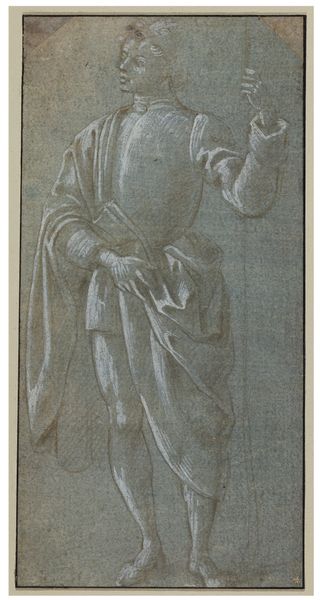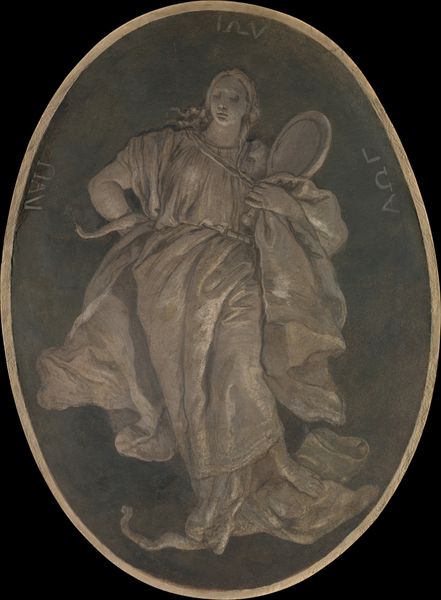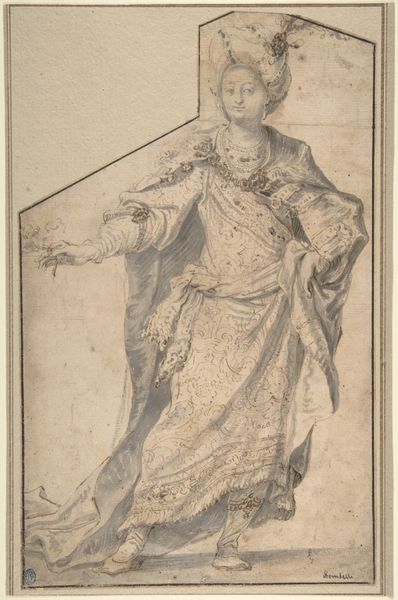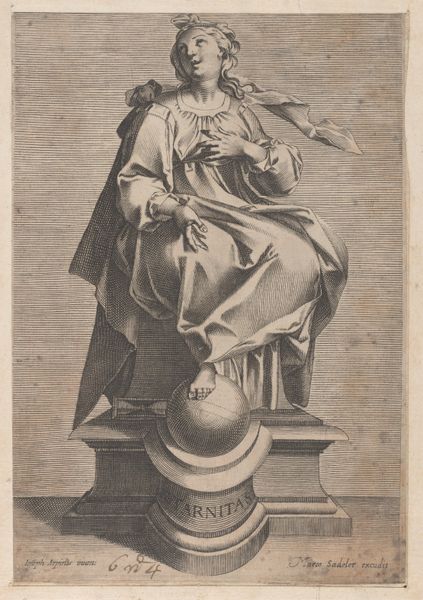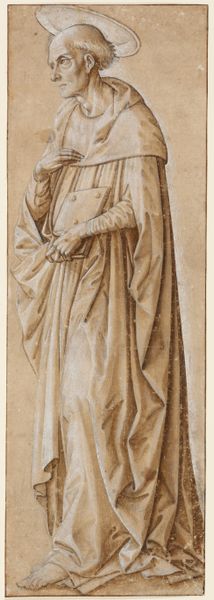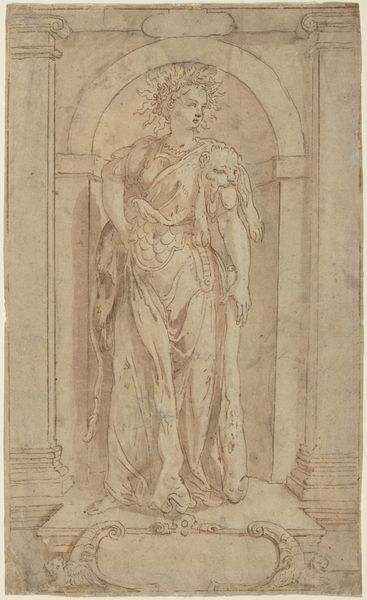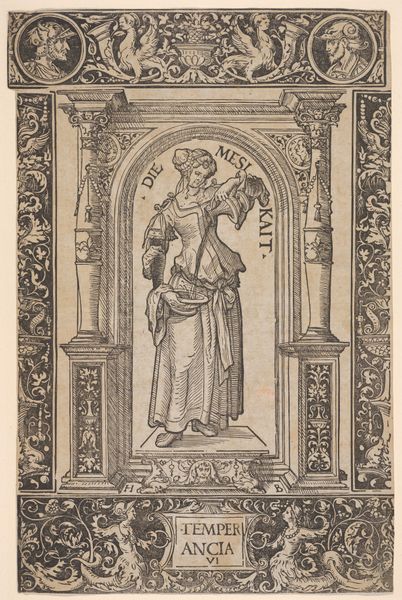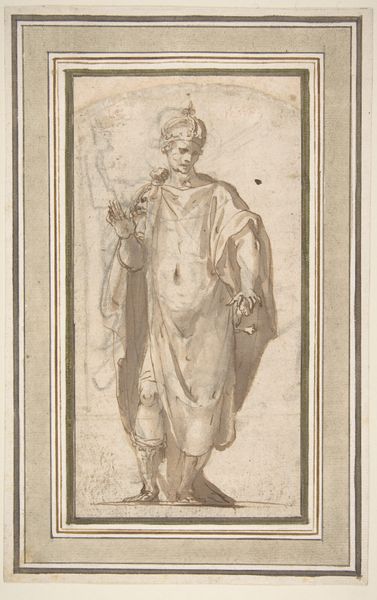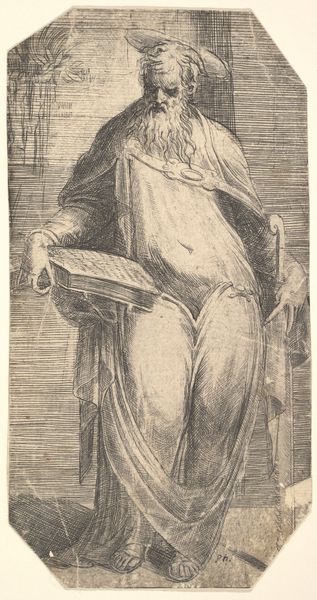
drawing, gouache, ink
#
portrait
#
drawing
#
allegory
#
gouache
#
figuration
#
11_renaissance
#
ink
#
coloured pencil
#
history-painting
#
italian-renaissance
Copyright: Public Domain
Curator: Paolo Veronese created this compelling Allegory of Benifico around 1550 to 1560. It's a work rendered in ink, gouache, and colored pencil on blue paper, held in the collection of the Städel Museum. Editor: It immediately strikes me as melancholic. The dominant cool hue and the regal figure with discarded symbols of power evoke a sense of loss or perhaps abdication. Curator: The materiality itself suggests a period of transition. Using a relatively inexpensive blue paper stock makes the piece feel immediate, perhaps preparatory. The layered applications of gouache and the colored pencil serve almost to replicate the visual characteristics and textures associated with oil paintings while being much more portable. Editor: Absolutely. One sees the artistic lineage in Venice during a very peculiar period when Venice was facing internal problems due to external attacks; an aristocratic crisis reflecting anxieties about leadership and justice which seems to be suggested by the discarded regalia at the figure's feet. This image invites reflections on social roles. Curator: Exactly. Notice how the application of white gouache heightens these tensions, and almost seems like labor itself manifesting as a physical substance of the work. This careful material choice seems calculated to affect perception in this way, don't you think? Editor: Definitely. The controlled color palette adds an intriguing dimension too. The limitation may reflect material constraints or perhaps even intentional artistic choices aligned to contemporary philosophical currents. Curator: It’s the perfect intersection between practical making and symbolic language. By tracing these elements, we gain access to this world and understand how artists worked within their means to give audiences more access to understanding themselves in society. Editor: Agreed. Ultimately, the allegory, crafted using relatively economical techniques and displayed within such institutions is really powerful because it invites contemplation regarding both social function and history itself.
Comments
stadelmuseum about 2 years ago
⋮
According to an original inscription on the back, this drawing is an allegory of charity. It belongs to a cycle of drawings of female allegories, a particularly popular motif for the decoration of Venetian villa interiors. Usually incorporated in a moral-theological pictorial programme, they were intended as an appeal to virtuous conduct in the Christian sense. In view of this work’s manner of execution, however, it can hardly have served as a mere preliminary study. Rather, brush drawings of this kind were collected by the educated nobility as independent artworks and bound into books to serve as a basis for scholarly discussion.
Join the conversation
Join millions of artists and users on Artera today and experience the ultimate creative platform.
